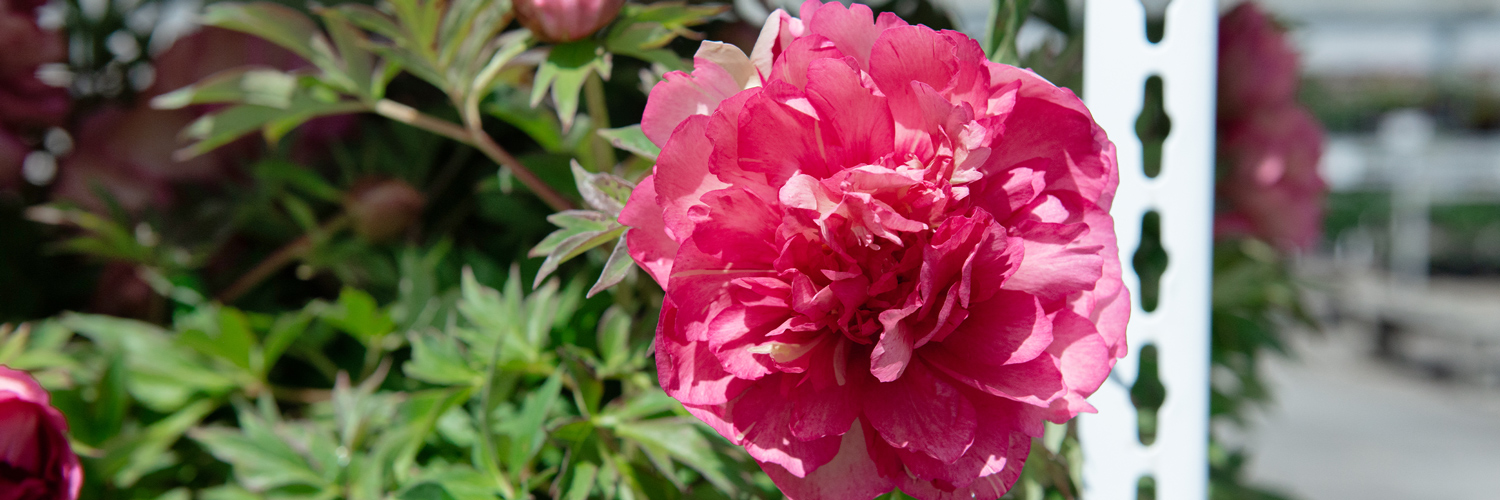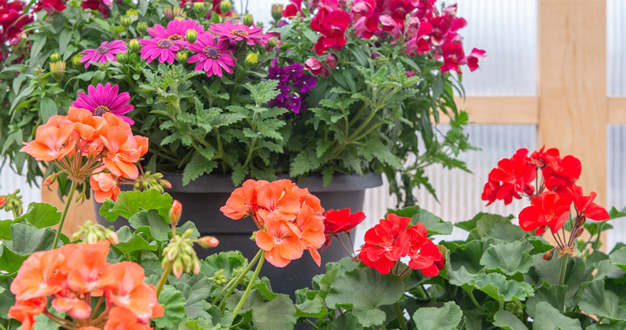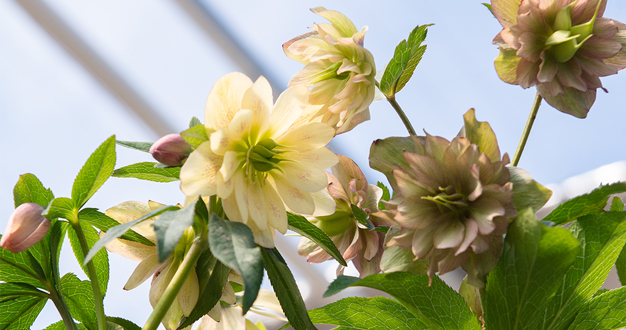
Peonies have been described as the consummate garden bloom – huge, colorful, and obsessively collectible. For thousands of years, generations of gardeners across the globe have cherished these lovely flowers for their beauty and fragrance. Let’s take a closer look at these world-famous blooms and find out why they hold such a special place in our hearts and landscapes.
Pictured above is Paeonia lactiflora ‘Kansas’.
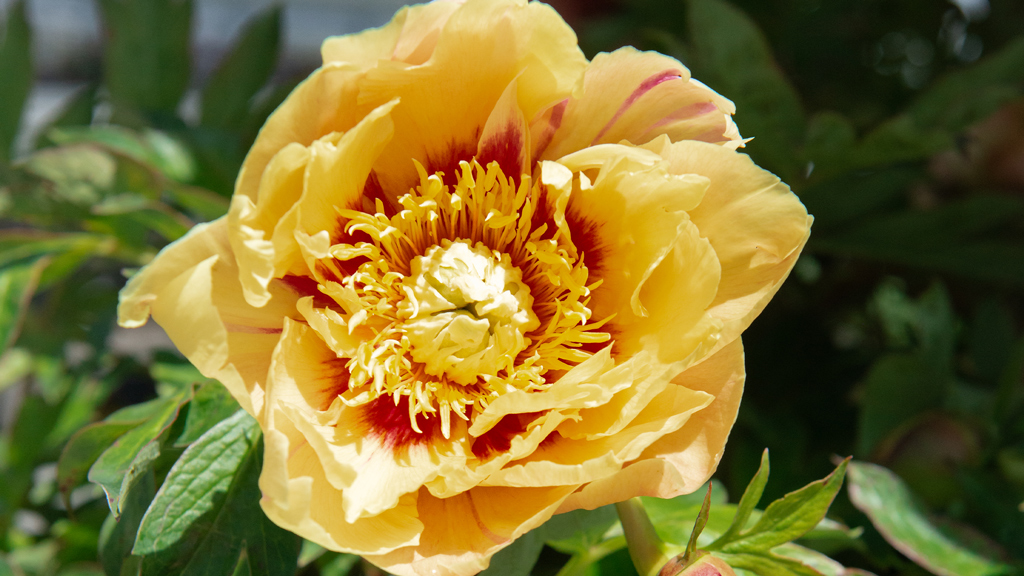
Ancient Blooms
The peonies we grow in our Midwest gardens are just a few of the dozens of known species in the genus Paeonia – itself the lone genus in the plant family Paeoniaceae. Species in this genus are native to parts of Europe, Asia, and western North America, and their cultivation for culinary and medicinal uses goes back thousands of years. Today, most of their breeding for use in landscapes and as cut flowers happens in Europe.
Connecting the world with a common flower obsession is an impressive feat, but on a more intimate scale, peonies have the ability to connect generations of individual families too. In so many similar stories of a love shared through flowers, one grandma’s peony garden becomes the basis for several more as children and grandchildren divide and replant the robust tubers to continue the tradition in their own landscapes. And as a long-lived perennial, one peony plant can bloom year after year for over a century.
Pictured above is Paeonia × ‘Bartzella’.
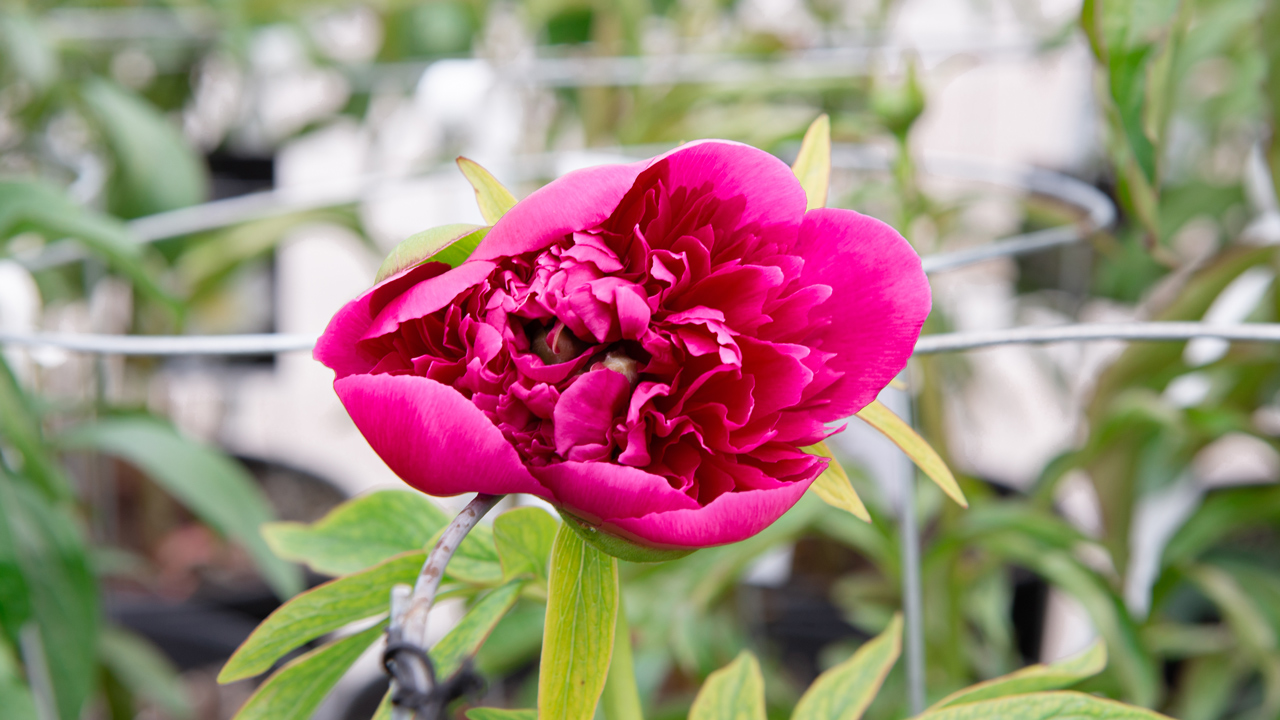
A Standout in the Landscape
As a member of a garden or landscape, peonies command a great deal of visual attention in the late spring and early summer. Traditionally blooming in late May or June, they’re among some of the first perennial blooms to appear each year. A peony bloom begins as a solid, golf ball-sized bud that opens into a huge, ruffly globe of countless, brightly colored petals above attractive, deep-green, deeply lobed foliage. And when the blooms appear, their heady fragrance can fill an entire landscape – then drift appealingly through the neighborhood too. With these distinctive good looks, a peony can stand as an individual specimen among other perennials in a bed or, when planted together, form an eye-catching row or grouping.
Pictured above is Paeonia lactiflora ‘Karl Rosenfield’.
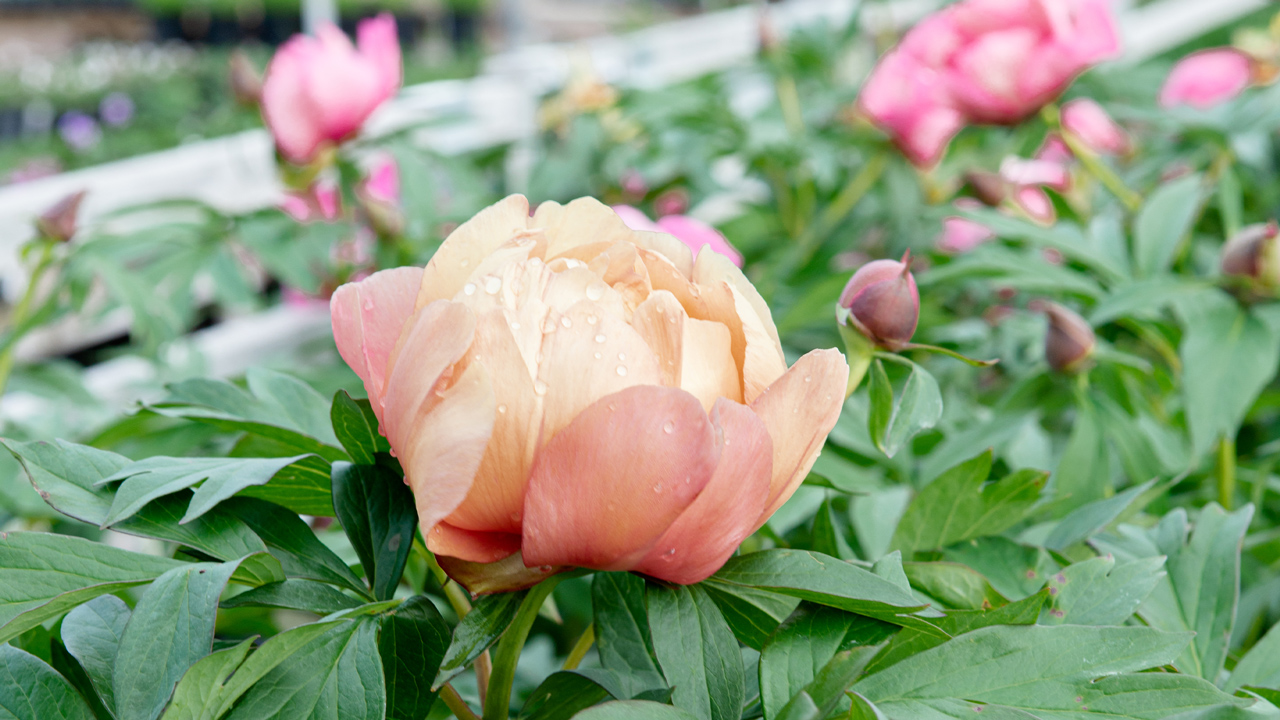
Outstanding Variety
No matter the cultivar, a peony’s blooms are large, fragrant, and colorful. But there’s a ton of variety among the different types too. To start, peonies are divided into three distinct growth forms: herbaceous, tree, and Itoh – or intersectional hybrid.
Herbaceous peonies die back all the way to the ground every fall and include the species Paeonia lactiflora – the garden peony we’re most familiar with. Tree peonies – Paeonia suffruticosa – are deciduous, woody shrubs that lose their leaves but maintain a woody structure above ground through the winter. Tree peonies are hard to come by and not often found in nurseries, but Itoh peonies – the hybrid cultivars of herbaceous and tree peonies – are an increasingly popular choice for gardeners. Itoh peonies combine some of the best attributes of both herbaceous and tree peonies, and in our collection, we have three examples – ‘Bartzella,’ ‘Julia Rose,’ and ‘First Arrival.’
Peony blooms come in a wide array of colors and styles, including single, semi-double, or double blooms. They can display tons of petals that are all the same, or they can have distinct guard petals surrounding a mass of smaller, frilly ones. Colors range from the palest cream to rich fire-engine-red, with shades of raspberry, carmine, bubblegum, and blush pink in between. Sunny shades of yellow and apricot can even be found too.
Pictured above is Paeonia × ‘Hillary’.
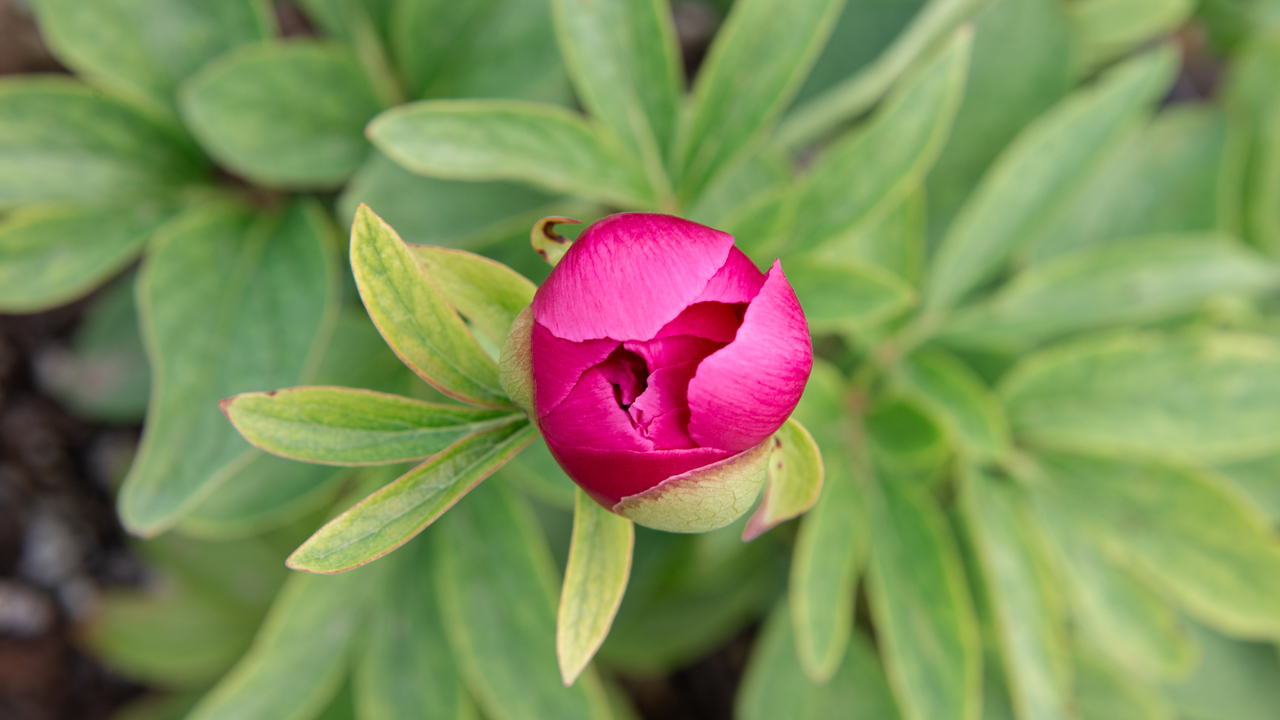
So Easy to Care For
For all their exotic good looks, peonies are tough – and they’re quite adapted to our Midwest climate. Like most plants, they’d prefer a spot in rich, fertile, well-draining soil, but if the soil is clay-like, they can adapt. What they need most is full sun, and after that, good air circulation to stave off fungal foliar diseases that can pop up if a peony is crowded too close to its neighbor. To further protect a peony from fungal problems, it’s a good idea to cut back the foliage in the fall and clear it away. Other than that, an established peony pretty much takes care of itself.
But what about the ants? If you’ve seen peonies growing in a garden, you’ve probably noticed visiting ants – an interesting, and beneficial partnership. The developing peony buds secrete an attractively sweet nectar that ants love – along with other beneficial insects like bees and lady beetles. In exchange for this valuable energy supply, the ants defend the peony from bud-chomping insects that would otherwise damage the developing blooms and ruin them for later. It’s a fascinating ecological partnership that’s fun to watch while you wait for the flowers to appear. And when the flowers bloom, the ants will move on too.
Pictured above is Paeonia lactiflora ‘Karl Rosenfield’.

Find Your Favorite Peony
Peonies are some of the most beautiful, fragrant, and easy-care blooms you can add to your landscape. As planting season begins, we hope you’ll come visit our large, open Nursery Yard and see for yourself. If you have questions or need guidance in your choice, just let us know. We’re here to help in any way we can, and we’re excited to help you make the most of your outdoor space this spring.
Pictured above is Paeonia lactiflora ‘Shirley Temple’.

